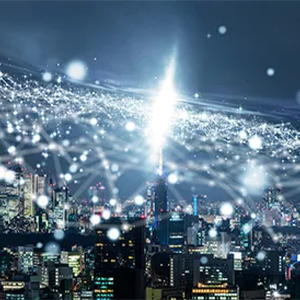The selection of network transmission media is crucial to the quality of communication. This article will compare the advantages and disadvantages of fiber optic cables and copper cables. We will first explain the working mechanisms and characteristics of fiber optic cables and copper cables, and compare the physical structures and signal transmission methods of the two transmission media. Next, we will introduce in detail the advantages of fiber optic cables in terms of high bandwidth, anti-interference, and long-distance transmission, as well as the advantages of copper cables in terms of cost, power consumption, and ease of deployment.
We will analyze the trade-offs between fiber optic cables and copper cables in different application scenarios such as enterprise LANs, metropolitan/long-distance networks, and home/small networks. Finally, we will look forward to the future development trends of the two network transmission media, including the continuous upgrading of fiber optic technology, the continuous development of copper cable standards, and the integrated application of the two media.
The basic principles of fiber optic cables and copper cables
Let me introduce you to the basic principles of fiber optic cables and copper cables in detail.
The working mechanism and characteristics of optical fiber cable:
(1) Working mechanism
- Optical fiber uses the principle of total reflection to transmit optical signals.
- The electrical signal is converted into an optical signal through a light source and then transmitted through the optical fiber.
- At the receiving end, the optical signal is converted back into an electrical signal to complete the optical fiber communication.
(2) Characteristics
- The bandwidth is large, and a single optical fiber can support high-speed transmission of 10Gbps and above.
- Strong anti-electromagnetic interference, not affected by the surrounding electromagnetic field.
- Low transmission loss, long-distance high-speed signal transmission can be achieved.
- Small size, light weight, easy to wire and manage.
In general, optical fiber cable is an advanced communication technology based on optical signal transmission, with advantages such as large bandwidth and strong anti-interference.
Working mechanism and characteristics of copper cable:
(1) Working mechanism
- Copper cable uses the propagation of electromagnetic signals in metal conductors to achieve signal transmission.
- The electrical signal generated by the transmitter propagates in the copper cable and is captured by the receiver.
(2) Characteristics
- Low cost, suitable for medium and short distance network applications.
- Limited transmission bandwidth, generally up to 10Gbps.
- Weak anti-electromagnetic interference, shielding measures are required.
- High transmission loss, only suitable for short transmission distances.
Compared with optical fiber, copper cable has lower cost, but it has certain limitations in bandwidth, anti-interference and transmission distance.
Comparison of two transmission media:
From the physical structure point of view, optical fiber is mainly composed of optical core, cladding and protective layer, while copper cable is composed of metal conductor, insulation layer and protective layer. In terms of signal transmission, optical fiber uses the principle of total reflection of optical signal, while copper cable uses the propagation of electromagnetic signal in metal conductor. This determines the difference between the two in performance indicators such as bandwidth, anti-interference and transmission distance.
In general, optical fiber cable and copper cable are both important network transmission media, each with its own unique application scenarios and advantages and disadvantages, and need to be selected according to actual needs.
Advantages of optical fiber cable
Let me introduce you to the main advantages of optical fiber cable in detail.
High bandwidth and low signal attenuation:
- Optical fiber can support ultra-high transmission rates of 10Gbps or even more than 100Gbps.
- Compared with copper cables, optical fiber has a very obvious bandwidth advantage and can meet the high bandwidth needs of future networks.
- The signal attenuation of optical fiber is also much lower than that of copper cables, which can achieve long-distance high-speed transmission.
Free from electromagnetic interference, safe and reliable transmission:
- Optical fiber will not be interfered by the surrounding electromagnetic field and has excellent anti-interference performance.
- Optical signals will not be affected by electrical noise, and transmission is safer and more reliable.
- This makes optical fiber more suitable for scenarios with strict requirements on transmission quality, such as finance, military and other fields.
Long-distance transmission, suitable for large-scale networks:
- A single optical fiber can achieve signal transmission of up to tens of kilometers, far exceeding copper cables.
- This makes optical fiber very suitable for large-scale network deployments such as backbone networks and metropolitan area networks.
- Optical fiber lines can achieve long-distance connectivity without relay equipment, greatly simplifying the network architecture.
In general, optical fiber cables play a key role in modern communication networks with their excellent bandwidth performance, anti-interference ability and long-distance transmission characteristics. These advantages make optical fiber an ideal choice for building high-speed, secure, and large-scale networks.
Advantages of copper cables
Let me elaborate on the advantages of copper cables over optical fibers.
Low cost, easy to install and deploy:
- The material and production costs of copper cables are relatively low, making them an economical transmission medium.
- Copper cables have a simpler structure and are easier to install and maintain.
- This makes copper cables have obvious advantages in some small and medium-sized network deployments.
Low power consumption, suitable for small-scale LANs:
- Copper cables usually have low power consumption and will not bring excessive energy consumption pressure to network equipment.
- This makes copper cables more suitable for use in scenarios such as homes and small offices that are sensitive to power consumption and heat dissipation.
Support high-speed Ethernet standards to meet daily needs:
- Existing Ethernet technologies, such as 1000BASE-T, 2.5GBASE-T, 5GBASE-T, etc., are all based on copper cable transmission.
- These standards can provide sufficient bandwidth support for daily network applications, such as file transfer, video conferencing, etc.
- Users are generally familiar with the use of copper cables, and deployment and maintenance are relatively simple.
In general, although optical fiber has more advantages in bandwidth and transmission distance, copper cables still play an important role in small and medium-sized LANs with their low cost, easy deployment, and low power consumption, meeting daily network application needs.
The trade-offs between optical fiber cables and copper cables in various application scenarios
Let me analyze the applicability and trade-offs of optical fiber cables and copper cables in different application scenarios.
Enterprise LAN:
- Fiber optic cables are superior in bandwidth, anti-interference performance, etc., and can meet the needs of enterprises for high-speed transmission.
- However, the cost and deployment complexity of fiber optic cables are relatively high, and they are suitable for large enterprises with high network performance requirements.
- Copper cables are relatively low in cost and simple to deploy, and are suitable for LAN construction of small and medium-sized enterprises.
Metropolitan/Long-distance Network:
- Fiber optic cables have obvious advantages in long-distance networks such as metropolitan area networks and backbone networks.
- Fiber optic cables can achieve high-speed transmission over tens of kilometers or even longer distances, while the transmission distance of copper cables is very limited.
- The low signal attenuation of fiber optic cables also makes them more advantageous in large-scale networks, which can reduce the use of relay equipment.
- Therefore, in metropolitan area networks and wide area networks, fiber optic cables are the preferred transmission medium.
Home/Small Networks:
- In home and small office networks, copper cables are still the mainstream choice.
- Copper cables are lower in cost and simpler to deploy, meeting the bandwidth requirements of daily network applications.
- In contrast, the cost and deployment complexity of fiber optic cables are not suitable for small-scale networks.
In general, fiber optic cables and copper cables have their own advantages and disadvantages in different application scenarios. The most suitable transmission medium needs to be selected based on specific bandwidth requirements, network scale, cost budget and other factors.
Future development trend of fiber optic cable and copper cable
Let me analyze the future development trend of fiber optic cable and copper cable for you:
Continuous upgrading of fiber optic technology, further improvement of bandwidth:
- Fiber optic technology is constantly developing, and the bandwidth of single-mode fiber and multi-mode fiber has been greatly improved.
- At present, 100Gbps, 400Gbps and even 1Tbps fiber optic transmission technology has appeared.
- In the future, the bandwidth of optical fiber will continue to increase, which can meet the demand for ultra-high-speed transmission in future networks.
The continuous development of copper cable standards can support higher rates:
- Ethernet standards such as 2.5GBASE-T, 5GBASE-T, 10GBASE-T, etc. are also constantly updated.
- These new standards enable copper-based networks to support higher transmission rates.
- Although it cannot completely catch up with optical fiber, copper cable will continue to meet the needs of small and medium-sized networks.
The convergence of two network transmission media:
- Optical fiber and copper cable will not completely replace each other, but will play their respective advantages for converged applications.
- In backbone networks and metropolitan area networks, optical fiber will continue to play a leading role and provide ultra-high-speed transmission capabilities.
- In enterprise LANs and last-mile access, optical fiber and copper cables will be used in combination to complement each other’s advantages.
- The convergence of optical fiber and copper cables will make network architecture more flexible and efficient.
In general, in the future network development, optical fiber and copper cable will play a role together. Optical fiber provides high bandwidth support for backbone networks, and copper cable meets the access needs of end users. The two complement each other and jointly promote the advancement of network technology.
Summary
The reasonable selection of optical fiber cable or copper cable as network transmission medium is crucial to meet the needs of different applications. Our company has long focused on the research and development and production of network equipment and its supporting products, and has rich industry experience. Our optical fiber and copper cable products have reached the industry-leading level in terms of transmission performance and reliability, and can meet your demanding needs for high-quality and efficient network construction.
Whether you need to deploy optical fiber or copper cable in a telecom operator network, data center, or enterprise LAN, we can provide you with customized solutions. At the same time, our professional team will provide you with a full range of technical support, including on-site surveys, solution design, and equipment installation and maintenance. Contact us now to learn more about the application of optical fiber cable and copper cable.
Which is better, optical fiber or copper cable? FAQ
Fiber optic cable uses light to transmit data, while copper cable uses electrical signals.
Fiber optic offers higher bandwidth, longer transmission distances, immunity to electromagnetic interference, and lower signal loss.
Copper cable is generally less expensive, easier to install, and more flexible compared to fiber optic cable.
Fiber optic can support speeds up to 100Gbps, while copper maxes out around 10Gbps for traditional Ethernet.
Fiber optic can transmit for tens of kilometers, while copper is limited to around 100 meters for standard Ethernet.
Fiber optic is superior as it is immune to electromagnetic interference that can degrade copper cable performance.
Copper cable is generally less expensive upfront, but fiber optic may be more cost-effective long-term due to its higher bandwidth.
Fiber optic cable is typically thinner and lighter compared to equivalent copper cable.
Fiber optic installation and termination generally requires more specialized tools and skills compared to copper cable.
Fiber optic excels in high-bandwidth, long-distance, and mission-critical applications like telecom backbones and enterprise networks.




